Moderate request rate
- Moderate TPS
Payload starts at 10,000 rps with 1,000 increment until it reaches 25,000 rps.
Then stay there for 10 minutes.
We can see that all three add 50-100µs on top of the baseline, with slightly better latency for C++.
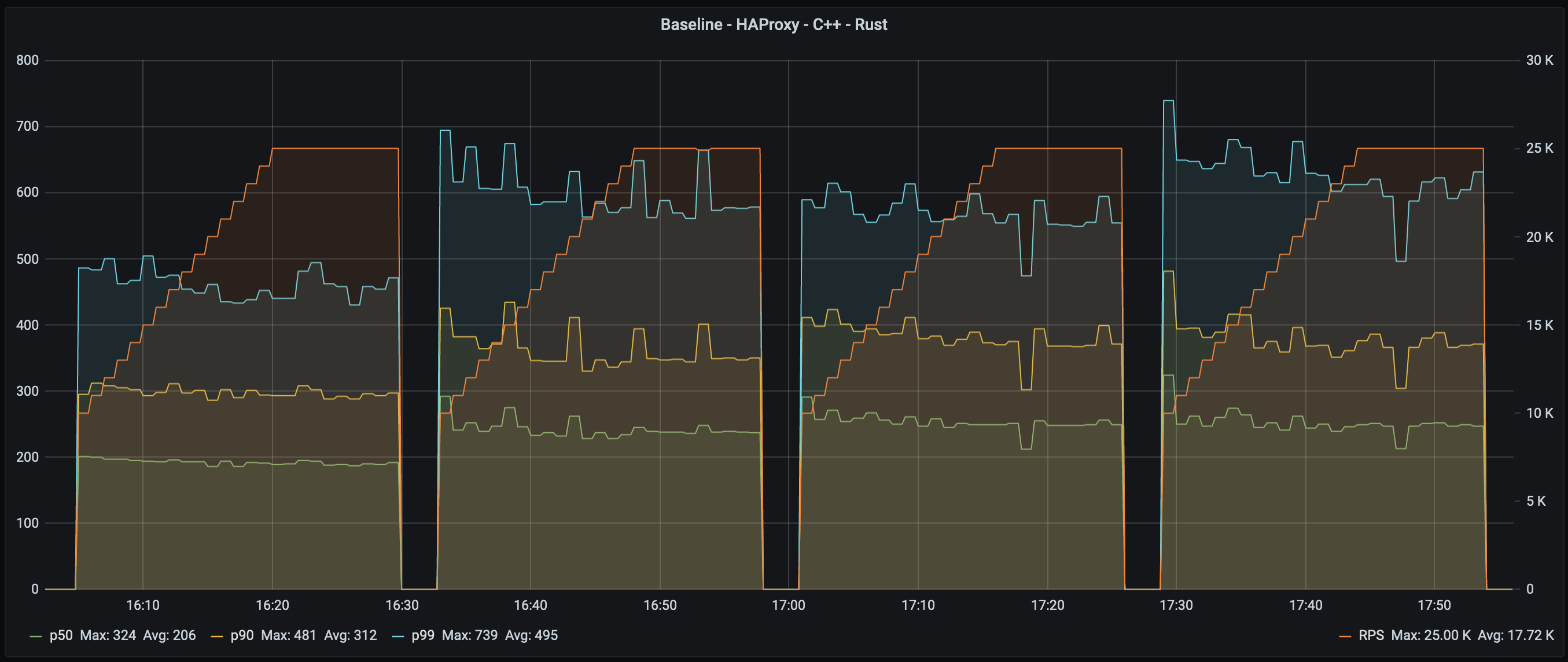
For outlier latency, the results are somewhat mixed. While for p99.9 the best results are shown by C++,
for p99.99 `C++' is the worst, and Rust is the best:
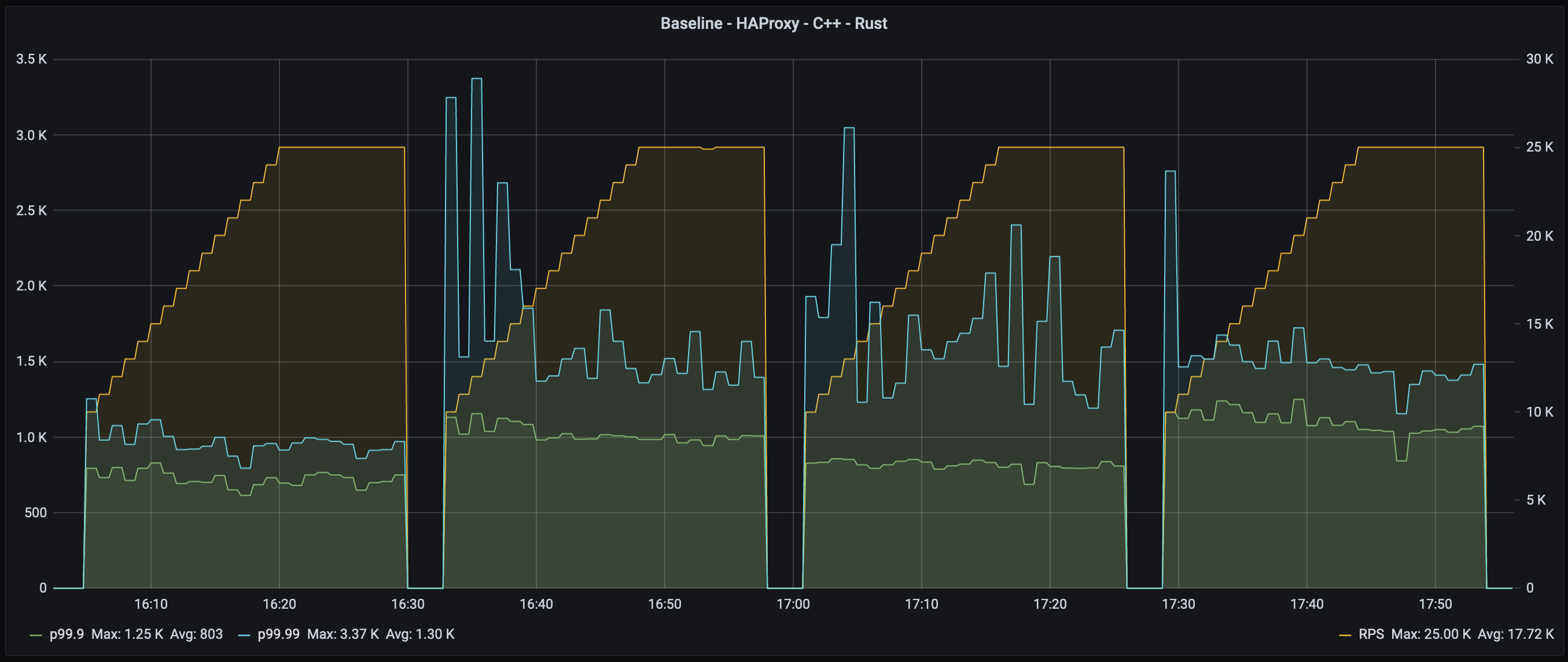
All three are nearly identical, adding ~50µs to the mean, and ~15µs to standard deviation:
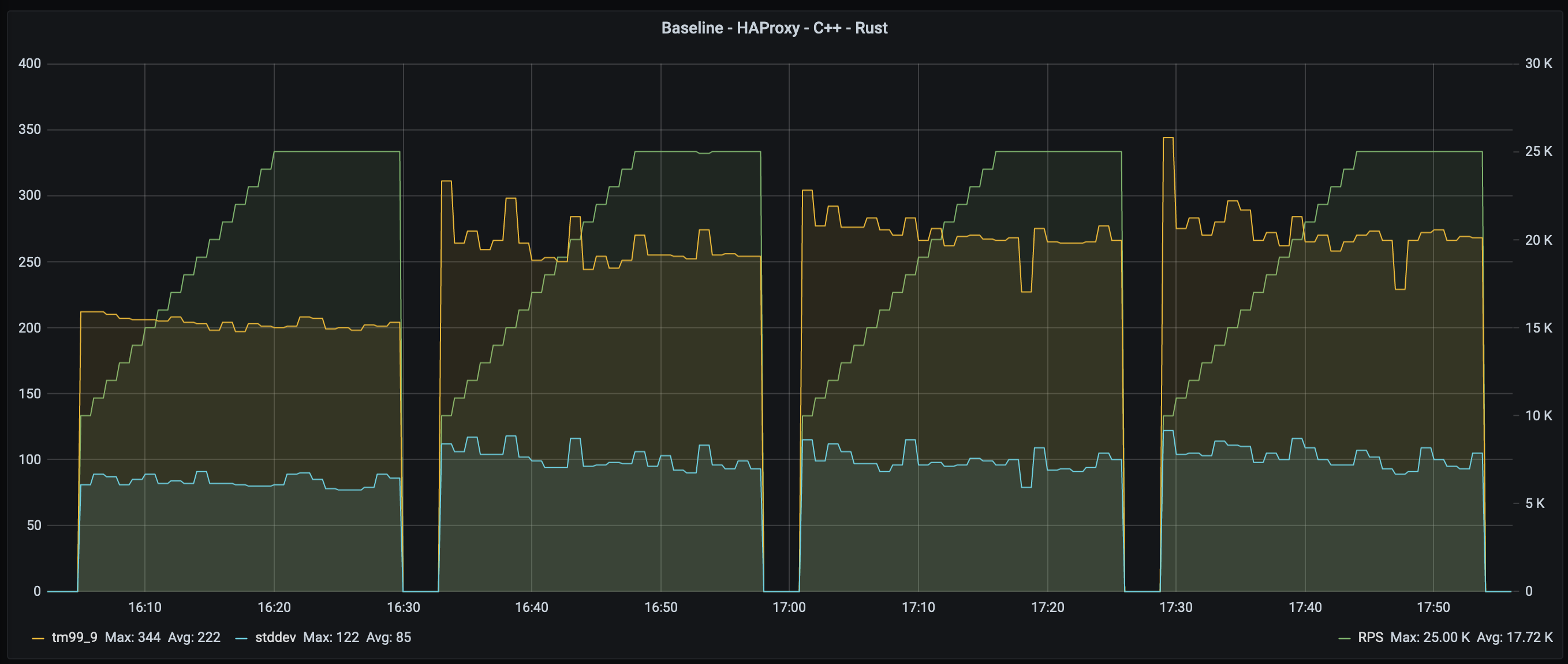
We can see that CPU utilization for all C, C++, and Rust are close, however, C++ consumes slightly more than Rust, and Rust consumes slightly more than C.
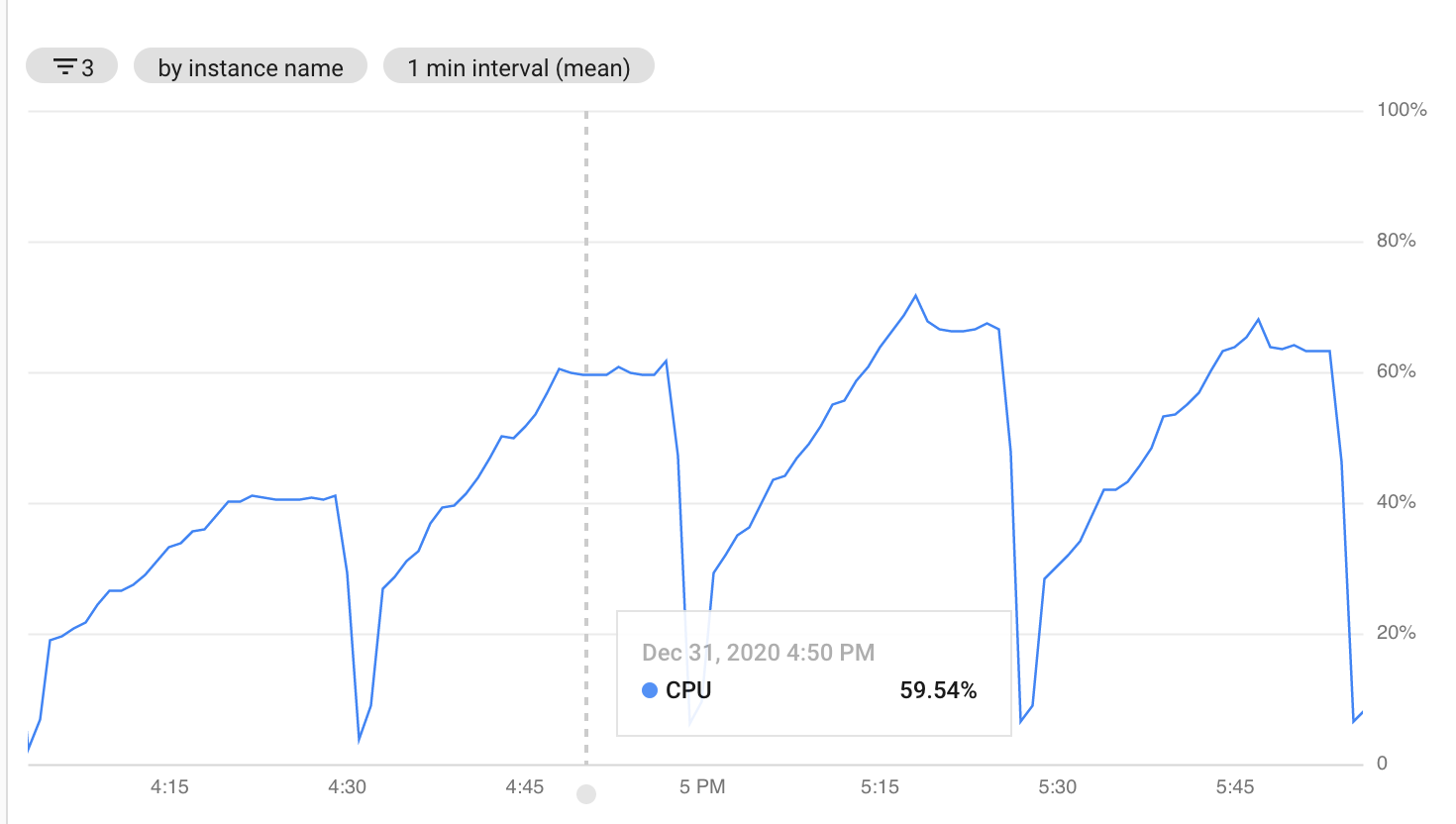
Memory consumption is on par for C++ and Rust, but HAProxy consumes more memory. However, the difference is really negligible and on the order of 0.1% of the total memory.

| p50 | p90 | p99 | p99.9 | p99.99 | max | tm99.9 | stddev | |
|---|---|---|---|---|---|---|---|---|
| Baseline | 190 | 295 | 459 | 718 | 945 | 8,160 | 202 | 83 |
| C (HAProxy) | 240 | 359 | 591 | 987 | 1,460 | 15,880 | 258 | 98 |
| C++ (draft-http-tunnel) | 246 | 368 | 554 | 797 | 1,620 | 16,820 | 263 | 95 |
| Rust (http-tunnel) | 245 | 366 | 594 | 1,020 | 1,380 | 12,310 | 265 | 97 |
Please note that for Java and Python, the max TPS was somewhat lowered, because of the inability of the TCP Proxies to handle more.
So the comparison was between:
- Rust - 25k rps
- Golang - 25k rps
- Java - 15k rps
- Python - 10k rps
Now we can see that at p50-p90 level, Golang is somewhat comparable to Rust,
but quickly deviates at p99 level, adding a whole millisecond.
Java and Python with lower RPS exhibit substantially higher latencies:
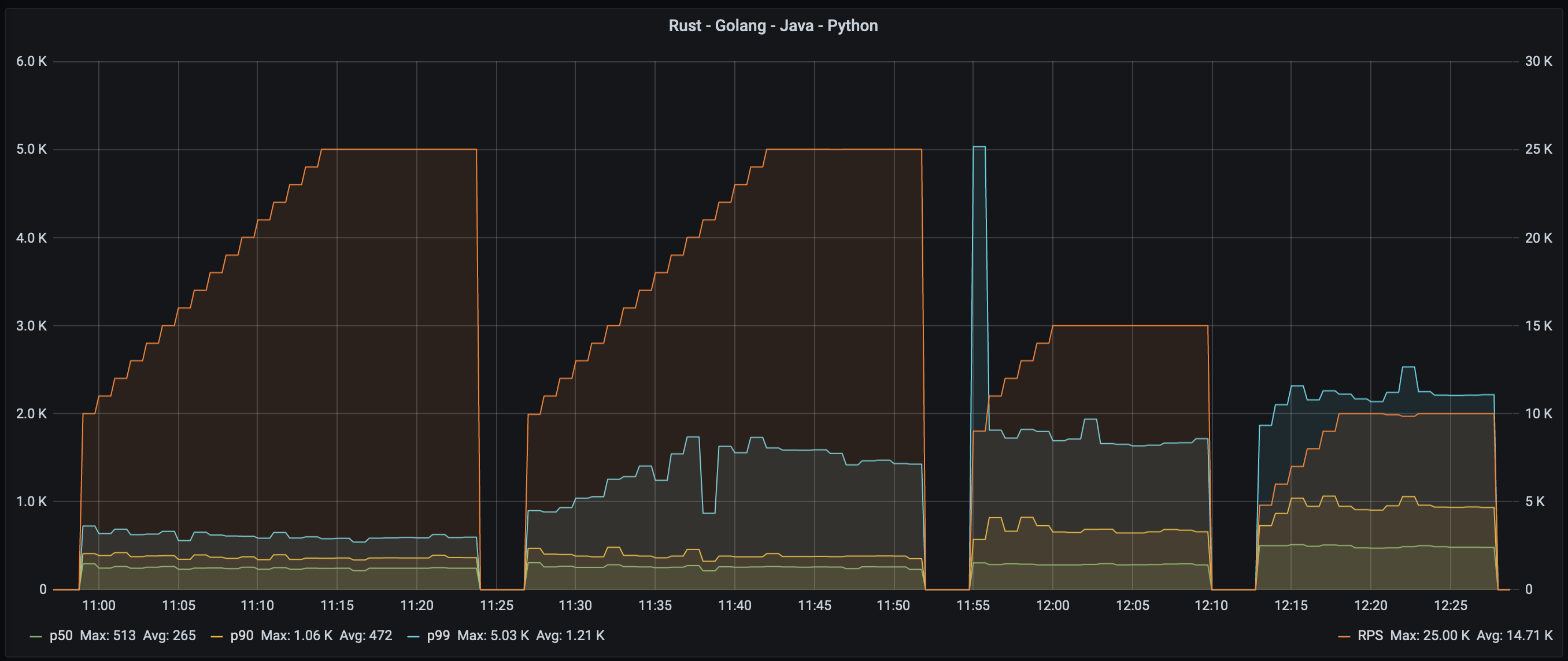
Outlier latency shows an even larger difference with Rust, and for Java is the worst of all four:
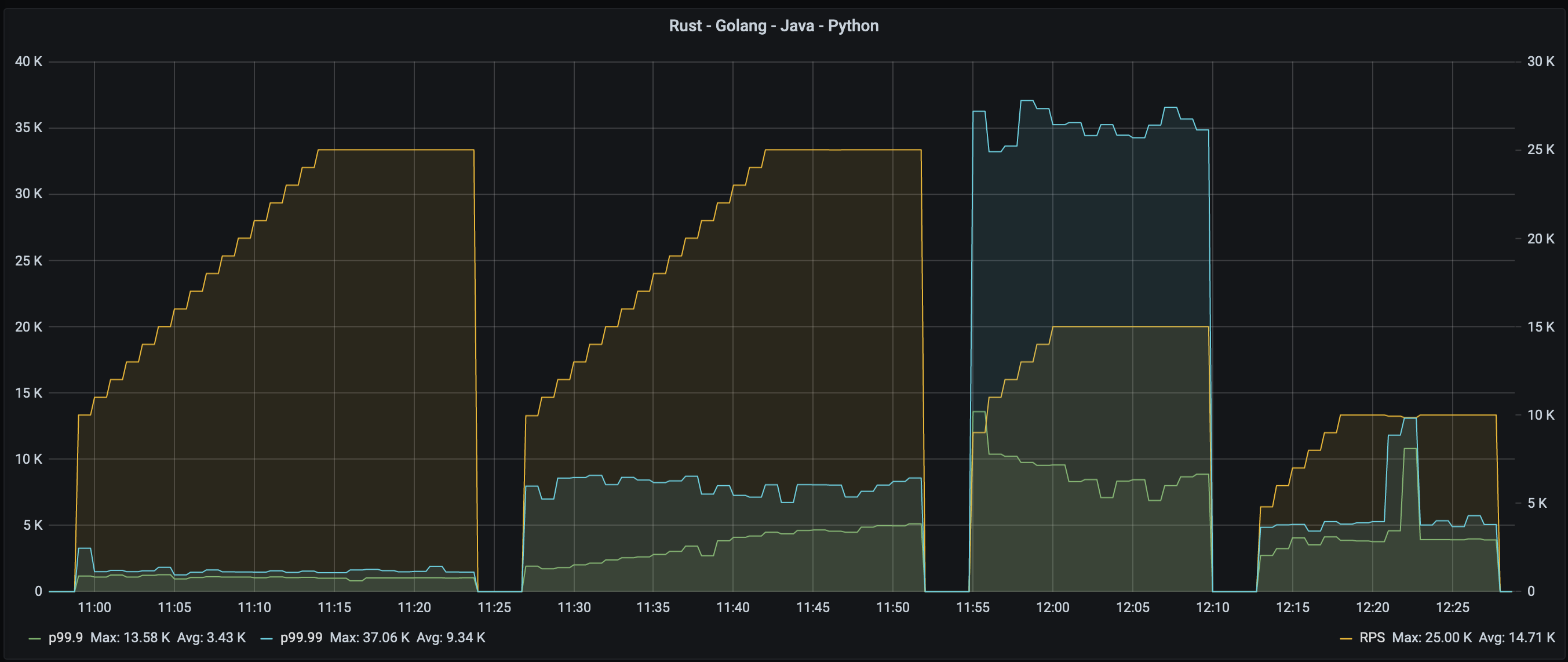
While the trimmed mean is not dramatically worse for Golang compared to Rust. But the standard deviation is. Again, Java and Python are well behind both Rust and Golang:
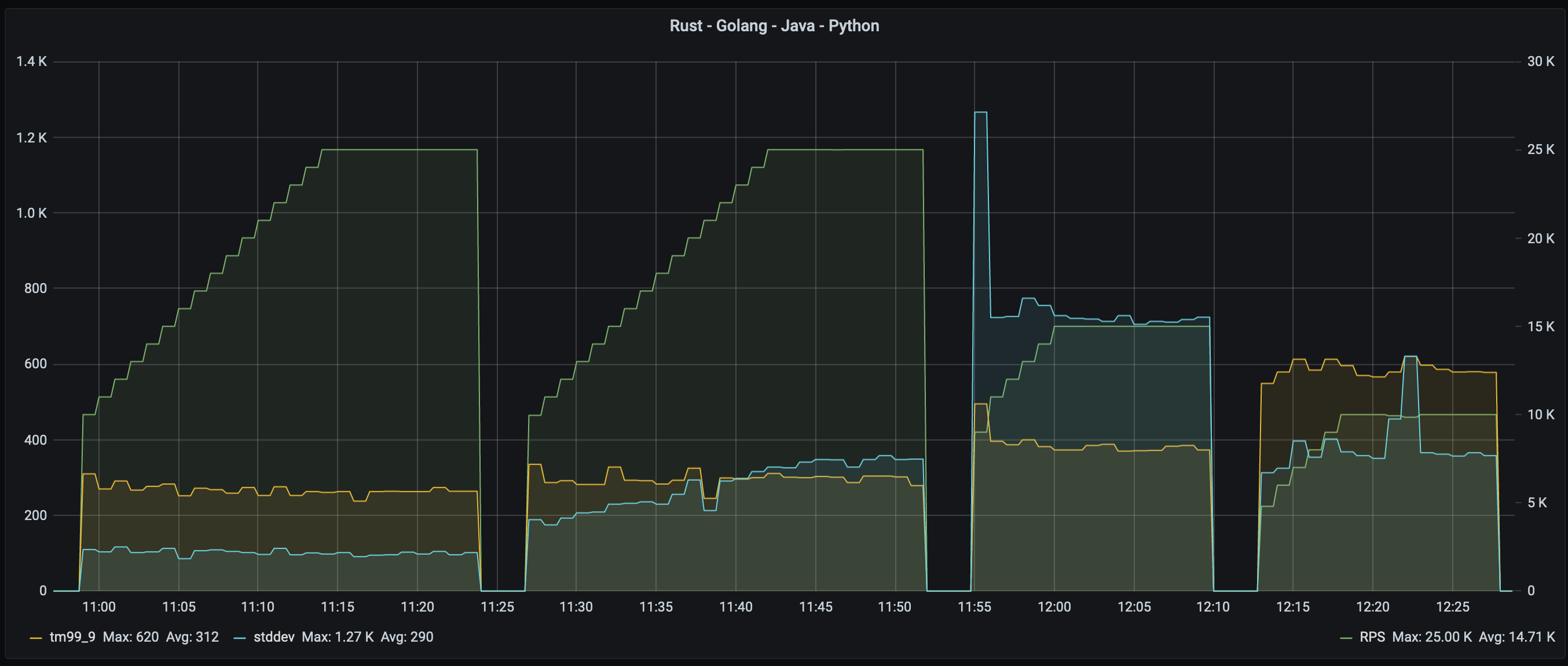
| p50 | p90 | p99 | p99.9 | p99.99 | max | tm99.9 | stddev | |
|---|---|---|---|---|---|---|---|---|
| Rust (http-tunnel) | 245 | 366 | 594 | 1,020 | 1,380 | 12,310 | 265 | 97 |
| Tcp-Proxy (Golang) | 259 | 387 | 1,510 | 4,910 | 7,970 | 16,160 | 304 | 350 |
| NetCrusher (Java) | 287 | 665 | 1,700 | 8,200 | 35,100 | 44,800 | 377 | 718 |
| pproxy (Python) | 485 | 949 | 2,240 | 4,690 | 6,740 | 16,630 | 585 | 398 |
| p50 | p90 | p99 | p99.9 | p99.99 | max | tm99.9 | stddev | |
|---|---|---|---|---|---|---|---|---|
| Baseline | 190 | 295 | 459 | 718 | 945 | 8,160 | 202 | 83 |
| C (HAProxy) | 240 | 359 | 591 | 987 | 1,460 | 15,880 | 258 | 98 |
| C++ (draft-http-tunnel) | 246 | 368 | 554 | 797 | 1,620 | 16,820 | 263 | 95 |
| Rust (http-tunnel) | 245 | 366 | 594 | 1,020 | 1,380 | 12,310 | 265 | 97 |
| Tcp-Proxy (Golang) | 259 | 387 | 1,510 | 4,910 | 7,970 | 16,160 | 304 | 350 |
| NetCrusher (Java) | 287 | 665 | 1,700 | 8,200 | 35,100 | 44,800 | 377 | 718 |
| pproxy (Python) | 485 | 949 | 2,240 | 4,690 | 6,740 | 16,630 | 585 | 398 |
The Rust solution is on par with C/C++ solutions at all levels.
Golang is fine at p50-90, but the tail latencies and standard deviation are not as good.
NetCrusher and pproxy are unlikely suitable for latency-sensitive applications.